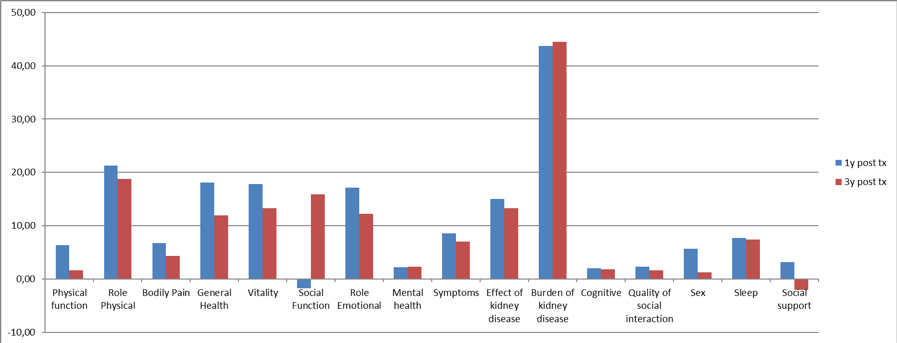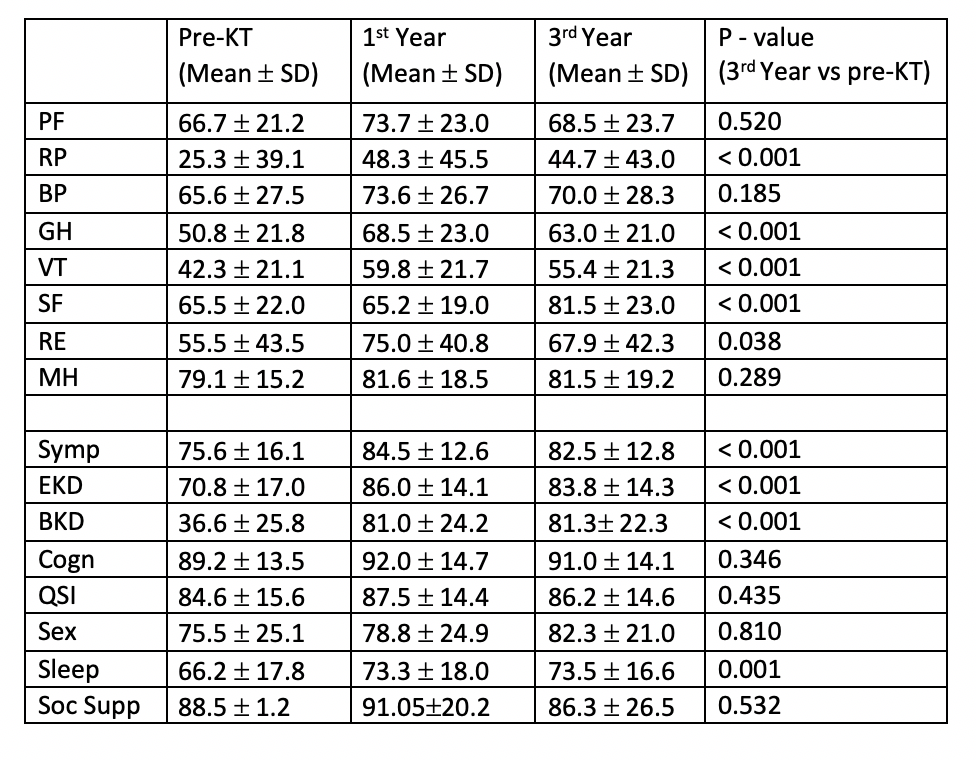“Getting Life Back” – Kidney Transplantation in the Elderly Patient
V. Tsarpali1, K. Lønning2, K. Midtvedt2, T. Bernklev3, N. von der Lippe4, M. H. Andersen2, K. Heldal1
1Clinic of Internal Medicine, Telemark Hospital Trust, Skien, Norway, 2Department of Transplantation Medicine, Oslo University Hospital, Oslo, Norway, 3Vestfold Hospital Trust, Tønsberg, Norway, 4Oslo University Hospital, Oslo, Norway
Meeting: 2019 American Transplant Congress
Abstract number: 243
Keywords: Elderly patients, Kidney transplantation, Quality of life
Session Information
Session Name: Concurrent Session: Kidney Psychosocial I: Cognitive and Behavioral Factors
Session Type: Concurrent Session
Date: Monday, June 3, 2019
Session Time: 2:30pm-4:00pm
 Presentation Time: 3:18pm-3:30pm
Presentation Time: 3:18pm-3:30pm
Location: Room 302
*Purpose: The number of elderly patients developing end stage renal disease (ESRD) who are eligible for kidney transplantation (KTx) is increasing, but their transplant rate is still low. Published data describing the long-term impact of KTx on health related quality of life (HRQoL) in this population are insufficient. We aimed to measure HRQoL and identify changes longitudinally from enlisting until three years post transplantation in a population of older kidney transplant candidates.
*Methods: All patients ≥ 65 years old who were referred to our transplant center from Jan 2013 until Dec 2016 were asked to participate. The Kidney Disease Quality of Life Short Form version 1.3 questionnaire was used to measure HRQoL. Scores were obtained at enlisting and thereafter every 6 months until KTx, with latest answer representing baseline. A new set of questionnaires were answered 10 weeks, 6 months, 1 year and 3 years post-engraftment.
*Results: Of 289 patients included, 214 (74%) patients had received a transplant and 90 had reached three years follow up by November 2018. 84 (93%) had completed the three years follow up questionnaire; 62 (74%) males, 61 (72%) on dialysis at enlisting, 20 (24%) KTx with a living donor. Mean age at the time of KTx was 71 years (65-82), mean time on the wait list was 15 months (2-50). Changes in HRQoL scores from baseline to 1 and 3 years post KTx are illustrated in the figure. Compared to baseline the scores improved after one year for most dimensions, except for social function (SF). At three years the SF score had improved significant, both clinically and statistically but physical function (PF) score declined to baseline level, probably due to ageing. The scores for the other dimensions remained relatively unchanged (Table)
*Conclusions: Our data suggest that HRQoL improves after KTx, also among older recipients and that the improvement remains after three years. The most remarkable change is a marked improvement of social function, illustrating that the patients are finally “getting their lives back”.
To cite this abstract in AMA style:
Tsarpali V, Lønning K, Midtvedt K, Bernklev T, Lippe Nvonder, Andersen MH, Heldal K. “Getting Life Back” – Kidney Transplantation in the Elderly Patient [abstract]. Am J Transplant. 2019; 19 (suppl 3). https://atcmeetingabstracts.com/abstract/getting-life-back-kidney-transplantation-in-the-elderly-patient/. Accessed December 15, 2025.« Back to 2019 American Transplant Congress


